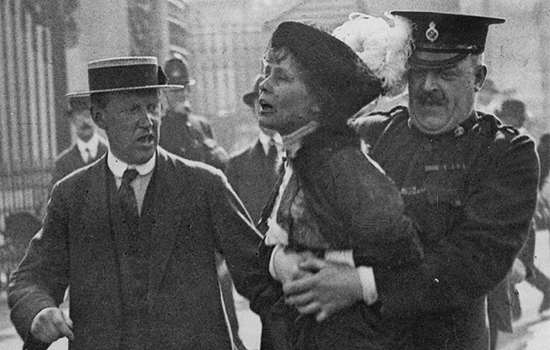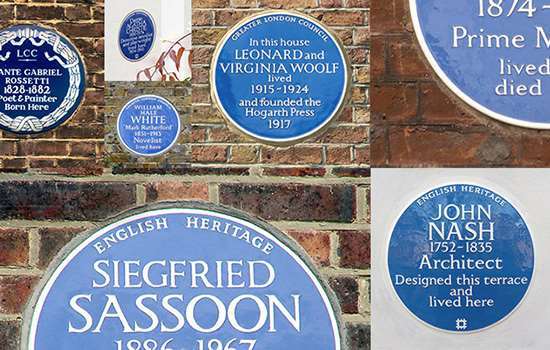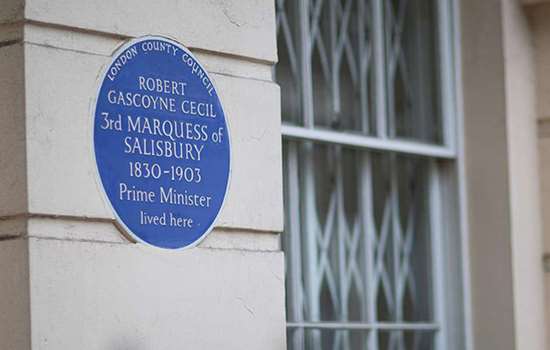THOMSON, John (1837–1921)
Plaque erected in 2024 by English Heritage at 15 Effra Road, Brixton, London, SW2 1BX, London Borough of Lambeth
All images © English Heritage
Profession
Photographer
Category
Commerce and Business, Fine Arts, Journalism and Publishing
Inscription
JOHN THOMSON 1837–1921 Photographer, geographer and travel writer lived here
Material
Ceramic
John Thomson was a pioneering photographer, geographer, travel writer and explorer, and a ground-breaking photojournalist working at the advent of the medium. He is commemorated with a blue plaque at 15 Effra Road, Brixton, where he produced one of his most influential and best-known works, Street Life in London (1877–8).
Early explorations
John Thomson was born on 14 June 1837 in Edinburgh. He was apprenticed to a maker of scientific instruments, and attended evening classes in natural philosophy, mathematics and chemistry.
Thomson joined his brother in Singapore in 1862 and began work as a photographer. His subjects were initially merchants but, increasingly drawn to native people and places, he began to explore further afield, visiting Ceylon (now Sri Lanka) and India in 1864.
In 1865, Thomson sailed for Siam (Thailand), via Penang and on to Cambodia. With two Chinese servants, eight Siamese boatmen and his dog Spot, he travelled to the ancient temple of Angkor (or Nakhon) Wat in 1866 and, with the permission of King Mongkut of Siam, he took the first known photographs of the ruins, and pictures of the king and senior courtiers.
Thomson faced challenges while taking photographs on the move, including difficult climates and the need for extensive equipment. Despite this, his photographs were technically and artistically advanced.
Return to Britain
Thomson returned to Britain in 1866. He showed his Cambodian photographs at the British Association’s annual meeting and was elected as a fellow of the Royal Ethnological Society and the Royal Geographical Society (RGS).
His first major work, The Antiquities of Cambodia: a Series of Photographs Taken on the Spot; with Letter-press Description, was published in Edinburgh in 1867. His pictures were brought to broader audiences via more popular publications, including the Illustrated London News and the book that inspired The King and I.
Thomson returned to Asia in 1867, establishing a studio in Hong Kong. There he encountered an established community of Chinese photographers who produced work of ‘better quality … than is produced by the herd of obscure dabblers’ in Britain.
In November he married Isabel Petrie, and their first son was born in Hong Kong in 1869. The couple’s second son was born on the Isle of Man in early 1870, where Isabel had gone to live with her mother.
Illustrations of China
Meanwhile, Thomson spent five years travelling and photographing across China. He made images of the Great Wall, and more intimate scenes such as a street peep-show and Buddhist monks playing a board game, which exemplify the range and quality of his work.
He eventually followed his family to Britain in the autumn of 1872 and published Illustrations of China and Its People. A Series of Two Hundred Photographs, with Letterpress Descriptive of the Places and People Represented – which sealed his reputation as a leading photographer, explorer and Western authority on China.
The way that Thomson reproduced his photographs in publications, and the combination of text and image, was innovative. Illustrations of China has been called a ‘landmark in the history of illustrated books’.
Thomson’s works were used as guides by people interested in travelling to and settling in the countries he depicted. His writings reflect imperial ideas and prejudices, suggesting that countries needed British rule and referring to racial and social ‘types’, but his images were sensitive portrayals of other cultures, creating a far broader panorama of Eastern lands, cultures and peoples than had been seen before in the West.
Life in London
By 1873, Thomson had settled permanently in London, where he continued to photograph. He and the family then moved around 1875–6 to what is now 15 Effra Road in Brixton. It was while living in this terraced house – formerly known as 12 Elgin Gardens – that Thomson published one of his most influential and best-known works, Street Life in London. This work, created with the socialist journalist Adolphe Smith, appeared serially in 1877–8 and in book form in 1878 and 1881. Their aim was to update Henry Mayhew’s famous survey of the London poor of the 1860s, which had been illustrated with engravings. Thomson’s photographs featured a cast of street characters, such as Covent Garden flower sellers, Italian musicians and ‘Hookey Alf of Whitechapel’.
In London, he strengthened his associations with learned societies and was appointed Official Instructor in Photography to the RGS in 1886.
Recognition and later life
Thomson received royal patronage and was made photographer to the queen and royal family in 1881. He continued to innovate, experimenting with colour photography and producing miniatures. His studio, Messrs Thomson, gained recognition for artistic portraiture. Although he continued to be involved with and gain commissions from the RGS, from this point he was better known as a society photographer.
He retired in 1910 and his son took over the studio. In 1917, Thomson was elected a Life Fellow of the RGS. He died in September 1921, a month after his wife.


